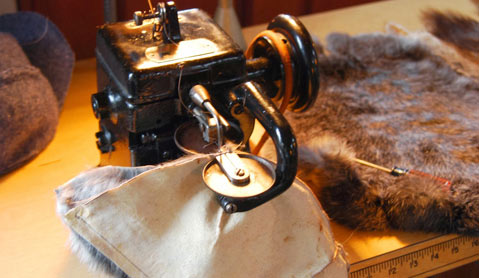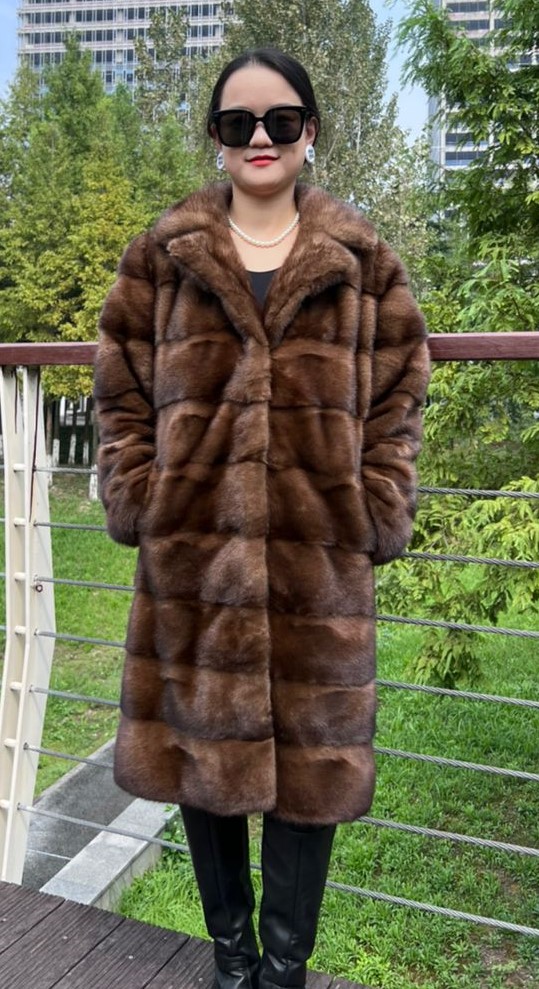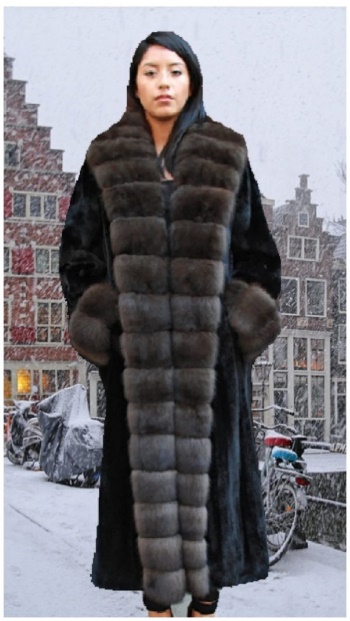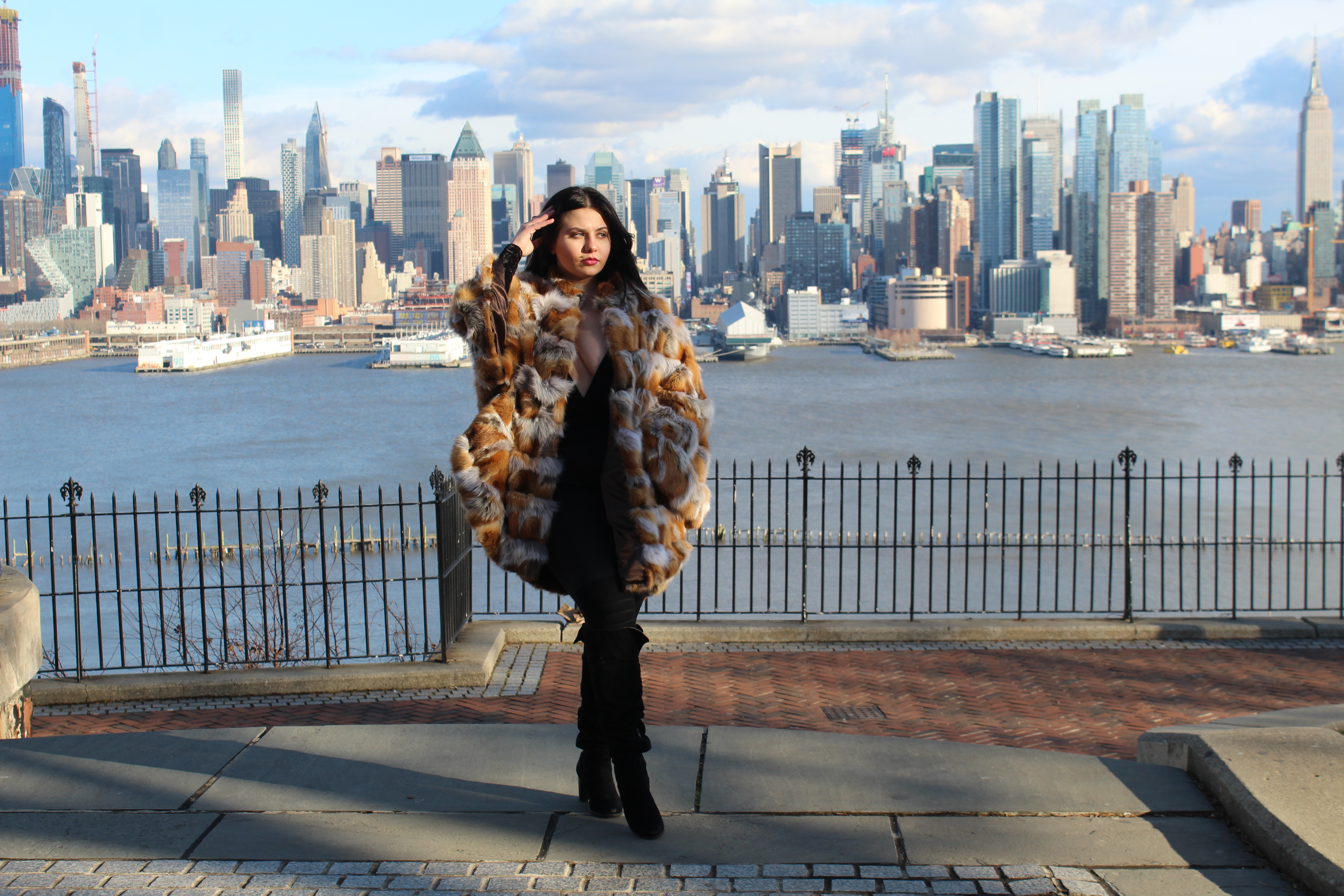Process of Manufacturing Mink Coats

full length mahogany mink coat
Manufacturing a mink coat involves several steps, from sourcing the fur to finishing touches. Here’s a general outline of the process:
- Sourcing Fur: Mink fur is typically sourced from fur farms where minks are raised specifically for their fur. The fur is harvested through humane methods such as shearing or pelting.
- Sorting and Grading: Once harvested, the mink pelts are sorted and graded based on their quality, size, and color. Higher quality pelts are usually reserved for luxury garments.
Fur Sewing machine
- Tanning and Dressing: The pelts go through a tanning process to preserve and soften the fur. This involves treating the pelts with chemicals to prevent decay and ensure durability. The pelts are then dressed, which involves removing any excess fat and flesh and softening the leather side of the pelt.
- Designing and Cutting: Designers create patterns for the coat, taking into account the size and shape of the pelts. Once the pattern is finalized, the pelts are cut accordingly.
- Fur Matching: Mink skins need to be properly sized and colors need to be consistent with each other as well as height of hair.
- Sewing: Skilled furriers sew the cut pieces together using specialized sewing machines and techniques suitable for working with fur.
- Fur Nailing: After mink pelts are carefully sewn together, the mink coat needs to be wetted with water and stretched on a nailing board to fit pattern. A fur staple gun is used to shape the fur and keep the fur shaped until dry. Once dried, all of the staples are removed.
- Fur Closing: The sleeves, the body, the cuffs and the collar are sewn together to form a physical mink coat.
- Fitting and Assembly: Once the coat is sewn together, it undergoes a fitting process to ensure it conforms to the desired shape and size. Any necessary adjustments are made at this stage.
- Lining: A lining is added to the coat for both aesthetic and functional purposes. The lining adds structure to the coat and provides a smooth interior finish.
- Finishing Touches: Details such as buttons, zippers, pockets, and closures are added to the coat. These details can vary depending on the design and style of the coat.
Fur Coat Repairs Are Us Marc Kaufman Furs
- Quality Control: Before the coat is packaged and shipped, it undergoes rigorous quality control checks to ensure that it meets the brand’s standards for craftsmanship and quality.
- Packaging and Distribution: Once the coat passes quality control, it is carefully packaged and prepared for distribution. It may be shipped to retail stores or directly to customers depending on the distribution model of the brand.
Mahogany Mink Horizontal Coat
When purchasing a mink coat, it’s important to consider both style and functionality. Here are a few popular styles you might consider:
- Classic Full-Length Coat: This style offers maximum coverage and warmth. It typically features a straight silhouette and may have a belt to cinch the waist for a more defined look.
- 3/4 Length Coat: This style falls just below the knee and provides a balance between warmth and mobility. It’s a versatile option that can be dressed up or down.
- Cropped Jacket: A cropped mink jacket is a more modern and trendy option. It usually ends at the waist or just below it, making it a stylish choice for layering over dresses or high-waisted pants.
- Parka: If you live in a particularly cold climate, you might consider a mink parka. These coats offer the warmth of traditional mink fur but with a more casual and sporty look.
- Stroller Coat: A stroller coat falls somewhere between a full-length coat and a jacket in terms of length. It’s a versatile option that works well for both formal and casual occasions.
When choosing a style, consider your personal taste, lifestyle, and the occasions you’ll be wearing the coat for. Additionally, make sure to select a coat that fits you well and complements your body shape.
The color of your mink coat depends largely on your personal style preferences and the versatility you’re looking for. Here are some popular options to consider:
Hot Pink Mink Coat
- Natural Brown or Black: These classic colors are timeless and versatile. They can be paired with a wide range of outfits and are often seen as investment pieces due to their enduring appeal.
- White or Pearl: These lighter shades offer a luxurious and elegant look. They can be especially striking for evening wear or formal events.
- Gray or Silver: Gray mink coats offer a sophisticated and modern alternative to traditional brown or black. Silver mink coats, with their icy tones, can add a touch of glamour to any outfit.
- Dyed Colors: Mink coats are often available in a variety of dyed colors, ranging from bold hues like red or blue to more subtle shades like blush or navy. Choosing a dyed mink coat allows you to express your individual style and make a statement.
When deciding on the color of your mink coat, consider factors such as your wardrobe preferences, skin tone, and the occasions you’ll be wearing the coat for. Additionally, keep in mind that certain colors may require more maintenance to keep them looking their best. Ultimately, choose a color that makes you feel confident and suits your personal aesthetic.
Magnificent Fox Cape NYC Background





